L19- Colour Vision in Primates
Colour Vision→
the ability to distinguish an object based on wavelength of light
to see colour, you need both:
photoreceptor cells, called cones, in the retina
neural mechanisms in the brain (translates signals into info)
Cones→
within the cones are photopigments called opsins
there are 4 types of opsins:
 → are all sensitive to different wavelengths of light
→ are all sensitive to different wavelengths of lightall 4 types of opsins were present in the amniote ancestor:
synapsids lost RH2, sauropsids did not lose any
monotremes lost SWS1
marsupials lost SWS2
→ there was a convergent loss of colour vision in different taxonomic groups, suggesting the common ancestor had both these opsins
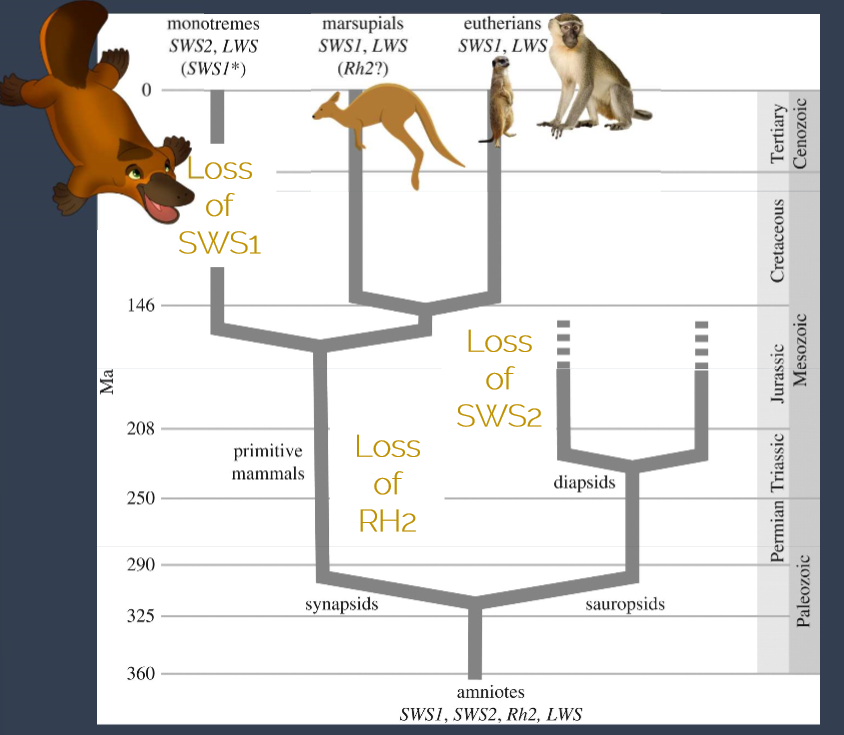 → basic mammals were dichromatic as they were nocturnal
→ basic mammals were dichromatic as they were nocturnal
Evolution of colour vision:
monochromacy→ 1 opsin, some placental mammals have lost the SWS1 opsin too so are only left with LWS
dichromacy→ 2 opsins, most mammals, limited ability to perceive colours, some have a mutation on SWS1 so can see UV e.g. fat-tailed dunnart

trichromacy→ 3 opsins, most primates, is a derived condition, some marsupials have convergently evolved this too e.g. honey possums
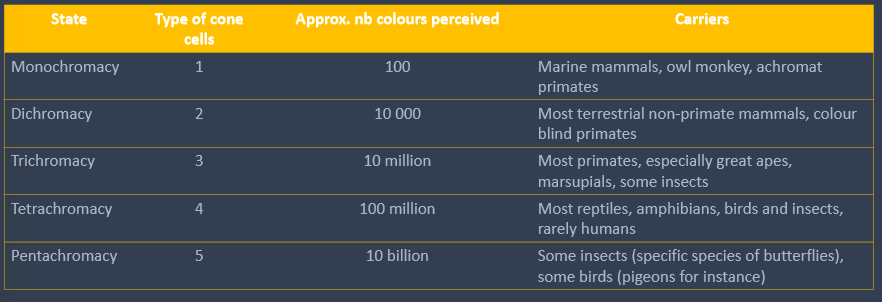 → the more opsins you have, the more colours you can detect
→ the more opsins you have, the more colours you can detect
e.g. chickens have 4 opsins and can see UV (mutation on SWS1 gene)
Neural Mechanisms:
Non-Primates vs Primates→
non-primates→ each cone cell is combined to a single nerve to give a combined signal, better at detecting light differences but not colour
primates→ each cone cell is connected individually to a nerve, is an own innovation, can detect colour
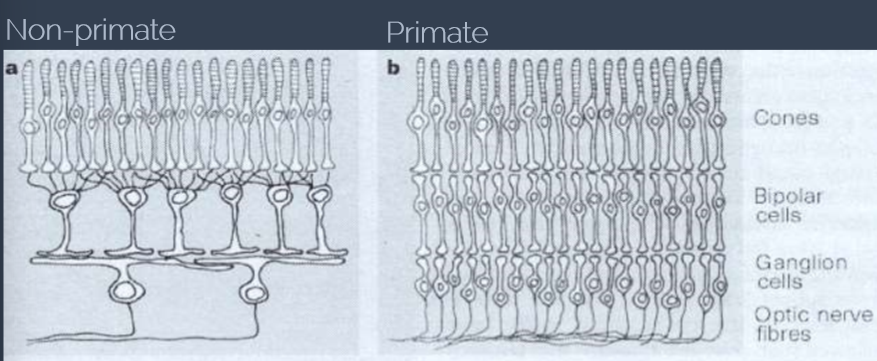
Dichromacy-
in most new world monkeys
have the SWS opsin on chromosome 7
have the L opsin on the X chromosome
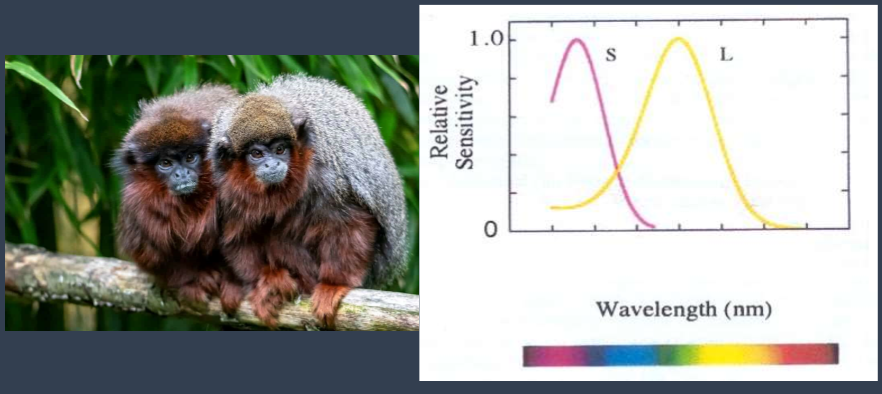 → can see colours to an extent, similar to red-green colour blindness
→ can see colours to an extent, similar to red-green colour blindness
Trichromacy-
in all old world monkeys and the new world howler monkeys
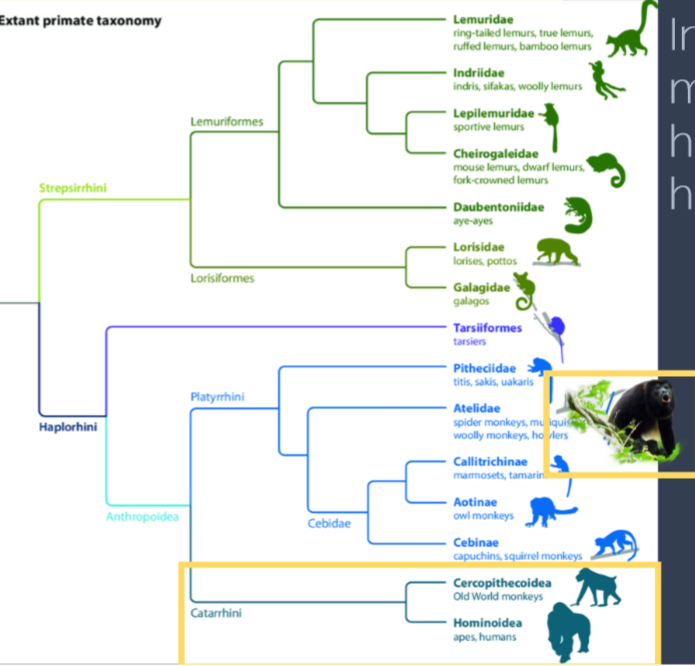
have the SWS opsin on chromosome 7
have a duplication of the L opsin on the X chromosome→ are now two copies of the L opsins that have evolved to two different variant
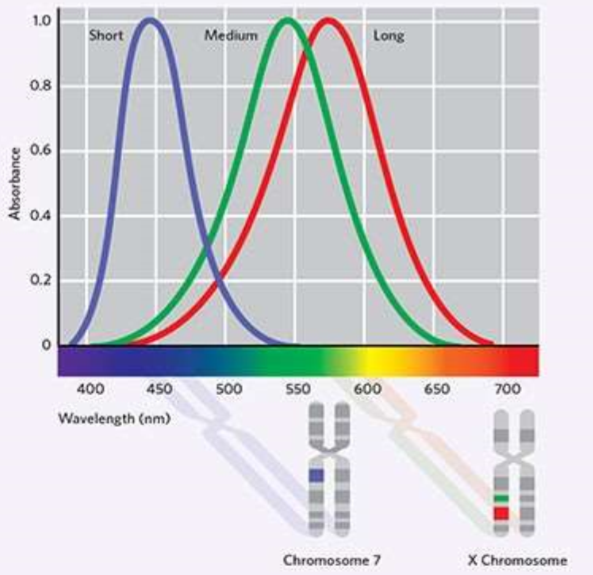 → one variant is sensitive to red light, one variant is sensitive to green light
→ one variant is sensitive to red light, one variant is sensitive to green lightgenetic dating has shown the duplication has occurred when the new world and old world monkeys split (30-40,000mya), but is much more recent in howler monkeys
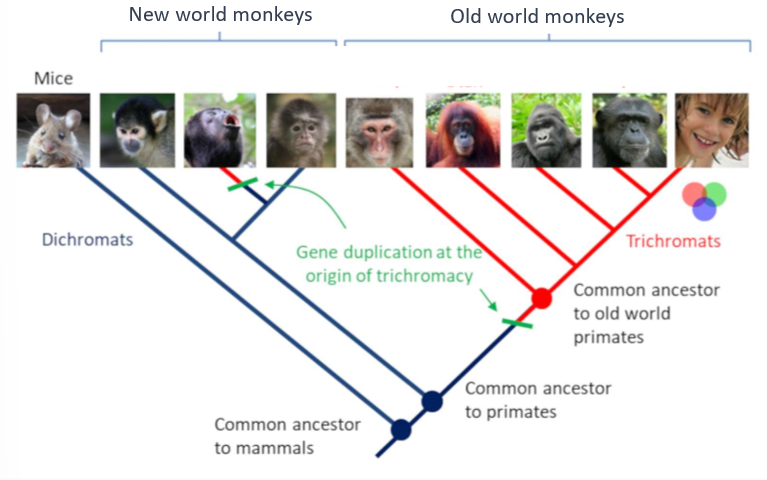 → there has been a convergence of colour vision in the howlers
→ there has been a convergence of colour vision in the howlers
Polymorphic Trichromacy-
seen in some new world monkeys and some old world monkeys:
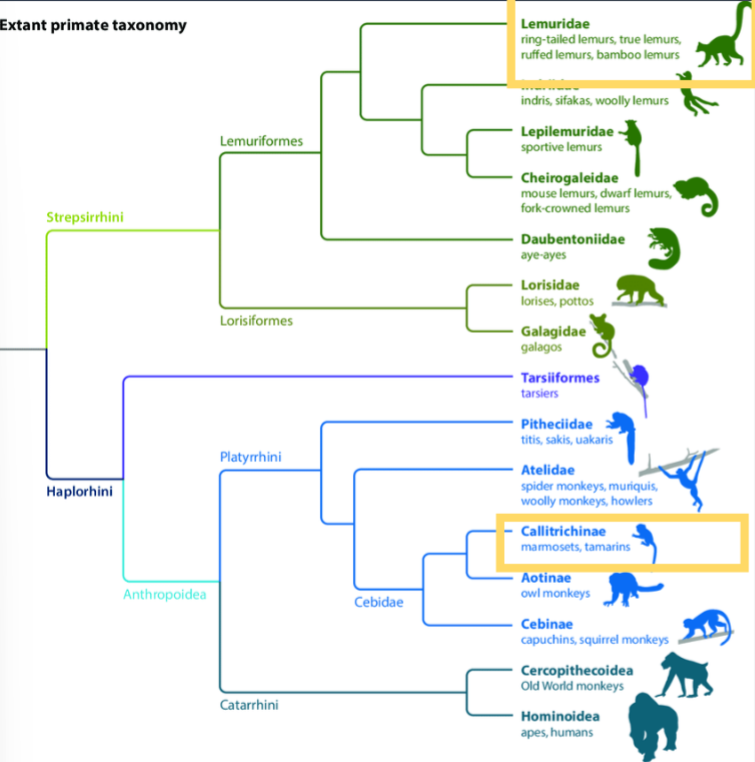
have the S opsin on chromosome 7
have 1 L opsin on the X chromosome that has multiple alleles
heterozygous females can see colour (trichromats)
homozygous females and all males cannot see colour (dichromats)
→ the ability to detect colour depends on if you are heterozygous (colour) or homozygous (no colour)
e.g. in new world monkeys, there are 3 L gene alleles
50-66% of females in a group are trichromatic
possible benefit of having a mixture of dichromats and trichromats in a group:
variation
dichromats can see shades better so may be able to detect predators better
may be frequency dependent selection/heterozygote advantage
e.g. white faced capuchins-
trichromatic females were better at picking red fruits
BUT
this has no fitness benefits (fertility rate, offspring survival, maternal survival)
→ must be maintained due to frequency dependent selection
there must be a selective advantage to trichromacy for it to have been maintained:
one possible suggestion is that it allows ripe fruit to be distinguished from the green foliage background
→ but the previous study disproved this
another suggestion is that fruits are seasonal so monkeys need to eat leaves when there are no fruits
young leaves are softer, more nutritious and red
dichromats cannot see young leaves but trichromats can
trichromats can eat the young leaves → advantage
can be seen as howlers are the most leaf-specialist of new world monkeys
after evolving, trichromacy could have other purposes:
detecting young (orange coat of young)
detecting sexual status of partners (red rumps of ovulating individuals)
finding a mate (red nose and red rump)
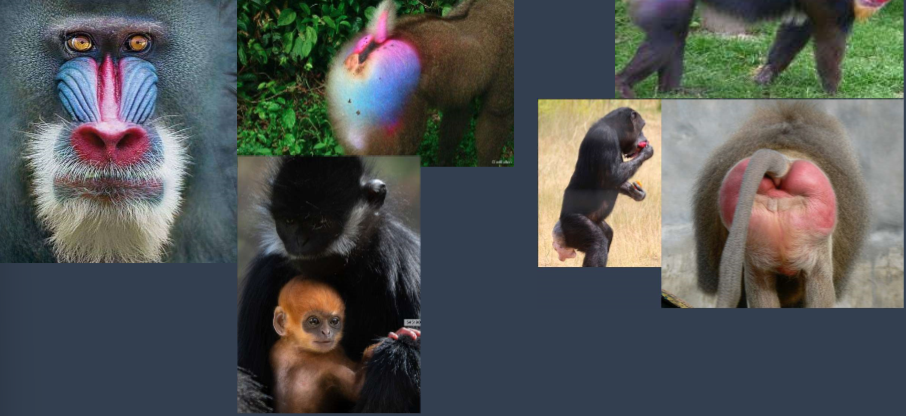 → trichromacy initially evolved for foraging and has now been recruited for other purposes
→ trichromacy initially evolved for foraging and has now been recruited for other purposes